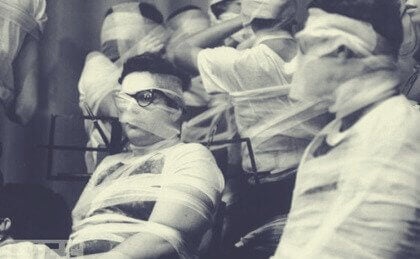David Cooper conducted an experiment that can be described as antipsychiatric in a place called Villa 21, the results are very encouraging, but for some strange reason, few psychiatrists take them into account in their diagnoses.
What may be behind this intentional disrecognise are economic interests, of course, this brings more benefits for doping to the mental patient than proposing other types of interventions, for the former enough a doctor and pills, the second requires more staff, time and analysis.
- Unfortunately.
- Many prejudices against mental illness persist.
- Which promotes the idea that a person with schizophrenia or bipolar disorder is dangerous to those around them.
Statistics from the World Health Organization itself indicate that only 5% of those diagnosed have violent behavior. Among those considered “normal”, the percentage is 10%.
For a long time, the treatment of mental pathologies has focused on the generation of mechanisms that suppress emotions and behaviors; basically, drugs are used to reduce the intensity of emotions and hospitalization in psychiatric hospitals; David Cooper objected to this scheme. From his vision, in which a more human approach prevails, the antipsychiatric experience called Villa 21 has emerged.
?« Antipsychiatry is political and subversive, by its very nature, in the face of bourgeois repressive social order (?) The antipsychiatist is the one who is willing to take the risks of gradual and radical change in his life. . ” – David G. Cooper-
David Cooper developed a vision of “madness” with a phenomenological and existential approach, greatly influenced by Herbert Marcuse’s ideas, distanced himself from the idea that mental illness had a physical origin and instead placed a special emphasis on social factors as triggers for these states of break with reality.
From this approach, he carried out his antipsychiatric experience. For Cooper, there were three types of madness:
Cooper has always been convinced that it is possible to cure all these pathologies, unlike traditional psychiatry, I did not think that these were chronic diseases, but that they could be overcome with proper follow-up, that is what he tried to do with his antipsychiatric. Experience.
At a large psychiatric hospital in London, Cooper managed to get him assigned a section to conduct his antipsychiatric experiment. This section was called “Villa 21”. Basically, it started from the idea that young people and adolescents should not mingle with patients who have been hospitalized for several years.
It has allowed them to open a special section for young people and adolescents, for example, organized a therapeutic community that operated independently and independently of the rest of the hospital, which had a total of 2,000 beds, Villa 21 had only 19 beds. All members of this section were new users who had been diagnosed with schizophrenia.
The selection of service personnel was based on similar criteria, young doctors and health assistants with little experience in psychiatric hospitals were selected, seeking to be open to a new approach and not to bear the prejudices of the past.
In Villa 21 autonomy has been promoted. Patients had ample leeway to make the decisions they considered relevant. Avoid setting standards in all areas where flexibility is possible. Patients decide and agree on day-to-day activities within the unit.
We have tried to give special importance to group dynamics, to accompany these processes there has always been a health professional whose role was simply to facilitate and suggest, in the end it is the patients who decide what activities they are and how they will be. In this way, several subgroups of work have been formed that have horizontal operation.
Initially, there was a period of chaos with this new method, however, over time, patients managed to establish a stable and functional organization that directly affected their well-being.
The experiment was in force between 1962 and 1966, during this stage 42 patients passed through it, all were discharged in a year, only 17% had to be readmitted. Despite this, the antipsychiatric experiment was cancelled, although it served as a model for additional trials.

